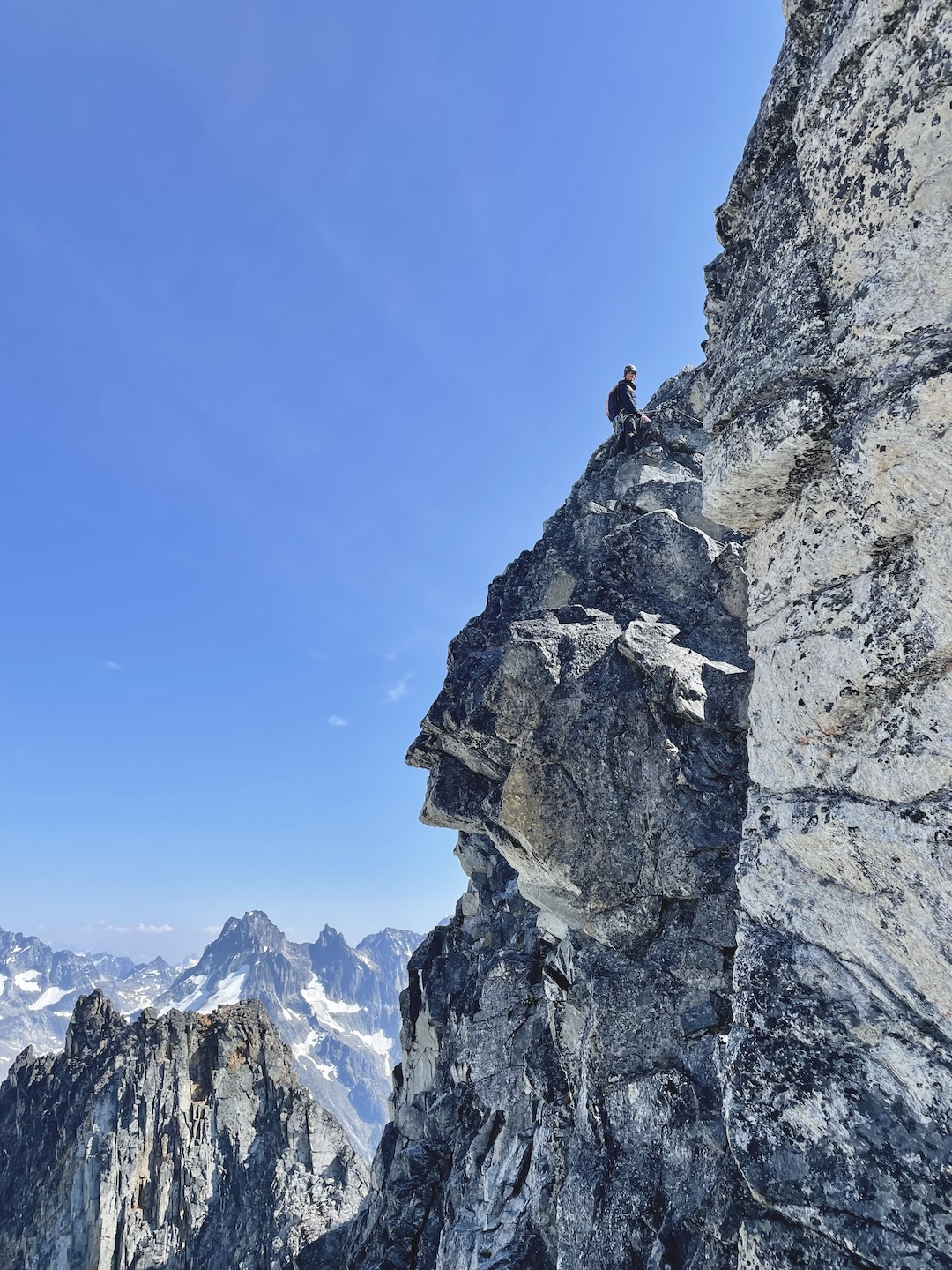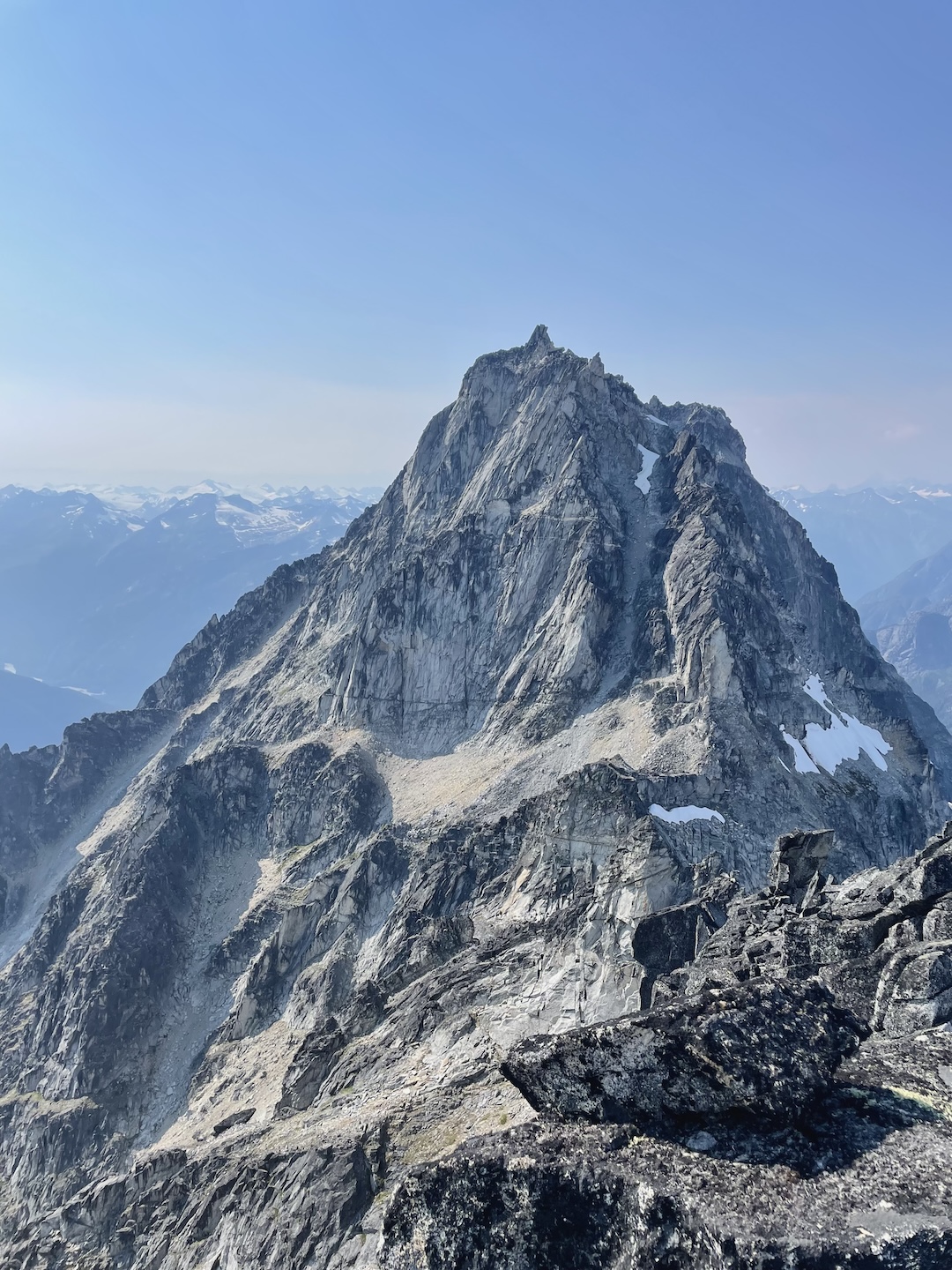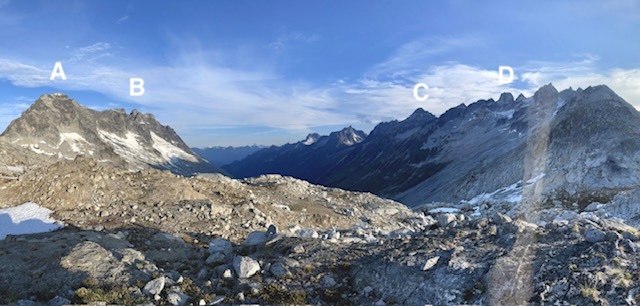Pantheon Range: Sedna Peak, Culbert Crag, Trident Tower
Canada, British Columbia, Coast Mountains
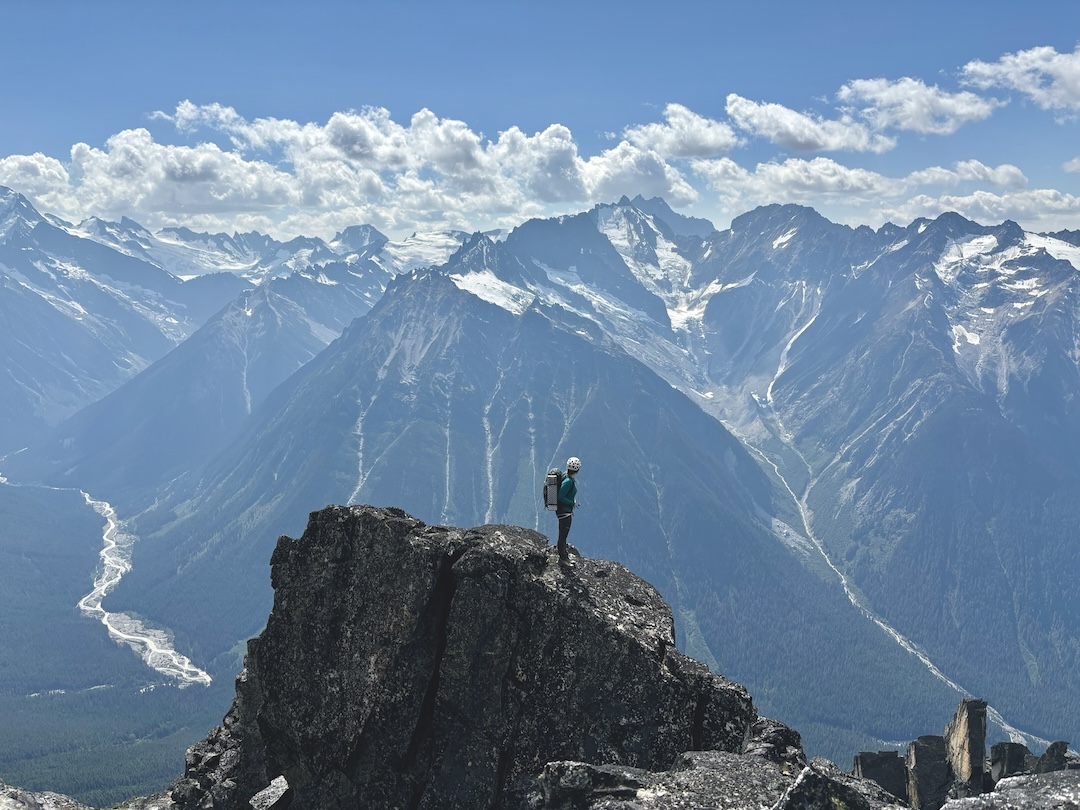
The Pantheon Range, located just 20km north of Mt. Waddington, sees very little activity from climbers despite the beautiful and rugged terrain. The first two mountaineers to explore the range were Dick Culbert and Glenn Woodsworth, on a trip in 1964 (see CAJ 1965). They were foiled by bad weather for much of the trip, but noted in their report that the range “will continue to supply worthwhile exploration and first ascents for many years to come.”
Inspired by their stories and driven by a desire to climb in a relatively untouched corner of the Coast Mountains, Francis Bailey and I drove up to Tatla Lake and flew by helicopter with White Saddle into the less explored southwestern end of the Pantheons in August 2024. Our principal objective was a summit that Glenn had told us about, which he had named Culbert Crag to honor his late friend and longtime climbing partner. The two of them never had the chance to return to the range, so this section of mountains towering above Frontier Creek remained unclimbed.
The helicopter dropped us at a col (51.52059, -125.37742) at the south end of a broad cirque between two summits believed to be unclimbed, and we made camp there. On August 4, we hiked up the southwest ridgeline of the peak to the west-northwest of our camp, summiting a mountain that apparently had only ever been climbed by mountain goats. We propose the name Sedna Peak (2,480m), following in the god-themed names in this range (Zeus, Juno, the Furies, Vishnu, etc.) and honoring the Inuit goddess of the ocean.
On the following day, we did a reconnaissance around the north side of Culbert Crag (2,567m), hoping to find a line on its north face going up from the glacier. Our mission proved fruitless, though, as the north face was too steep and loose for our liking, and the nearby gullies were filled with broken chunks of the dwindling glacier.
Opting instead to attempt Culbert Crag by its south side, on August 5 we hiked back over Sedna Peak, then lost some elevation to skip the ridge crest, which looked to be blocked by several unclimbable gendarmes. After several hours of traversing, we reached a south buttress that would connect us upward toward Culbert Crag. Four pitches of no more than 5.7 took us to the first of three false summits, where we made one rappel, followed by three more pitches to the true summit.
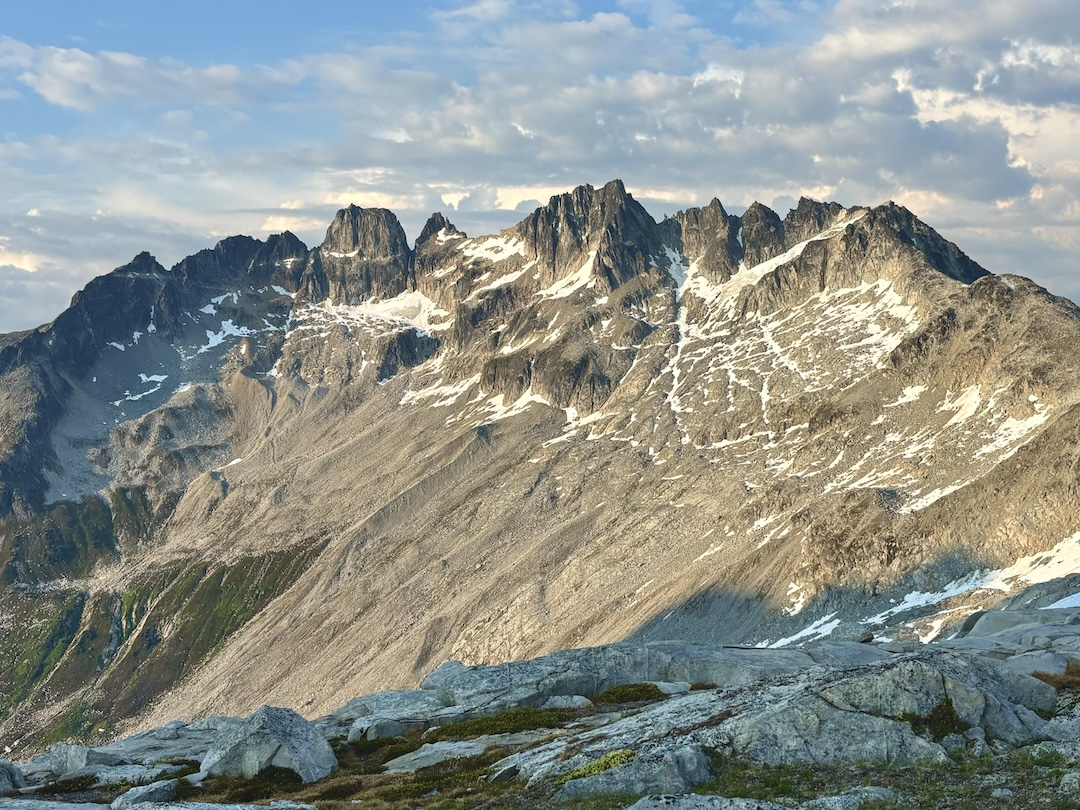
This involved journey had taken us nearly 15 hours, so we bivouacked directly below the summit block, nestled into a small rock shelter out of the wind. Thankfully, there was a patch of snow just below us for water. By the time we had tea and our small dinners going, the sun had already set. We did our best to sleep through a very, very cold night, having opted to sacrifice camping gear to increase our speed.
After basking in the morning sun and enjoying the incredible views for a while, we descended by a loose gully between the second and third false summits. It took until afternoon to traverse back to camp, and when we arrived we were happy to crawl into our sleeping bags. The following day, we took a full rest day, relaxing by a small waterfall of fresh snowmelt.
With a few more days before our planned helicopter pickup, on August 9 we scrambled the west side of Diana Mountain (2,639m), making its second ascent, and scouted another unclimbed peak, along the curving ridgeline between Diana and our camp at the col. It looked like a route on the north side would be the most feasible, so we set out the next day to see what we could find.
We dropped southeast down into the valley for a ways, then climbed straight up the bowl below the north side of the peak. After a chossy scrambling approach, the technical climbing involved three excellent pitches of no more than 5.8. This turned out to be the most fun day trip we did during our time in the Pantheons. We propose the name Trident Tower (2,679m).
—Andrea Tate, Canada


